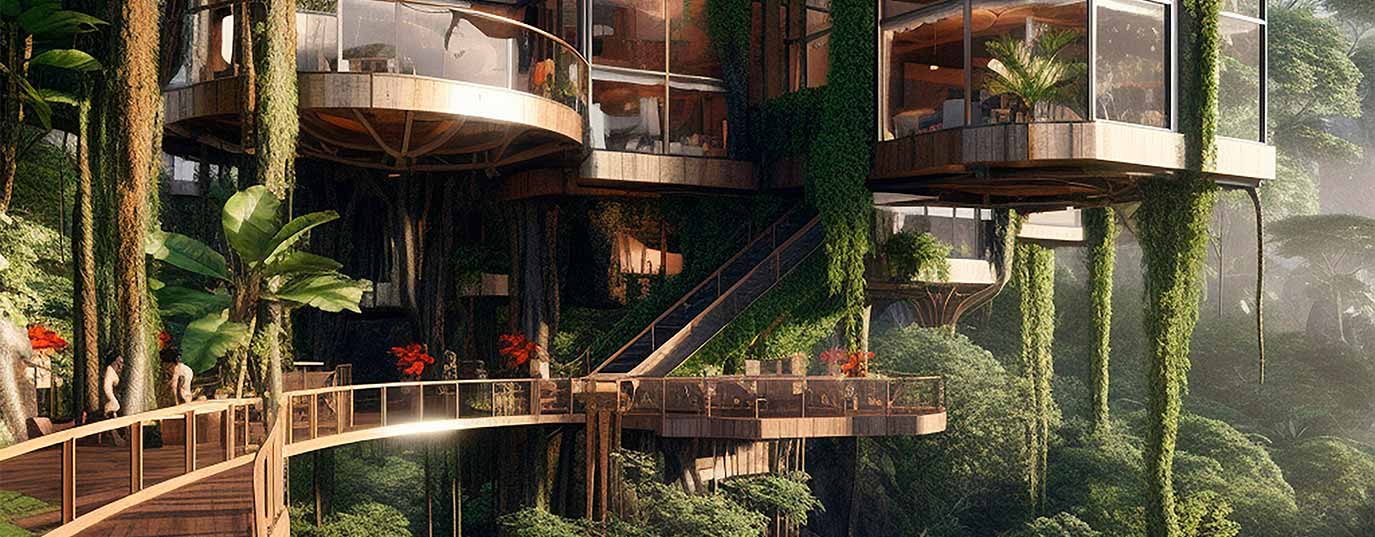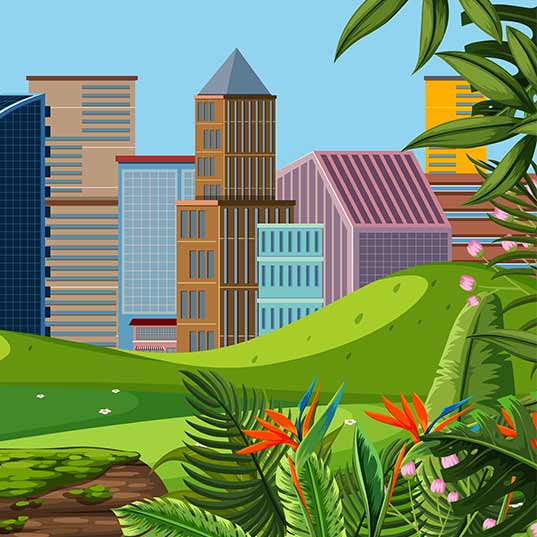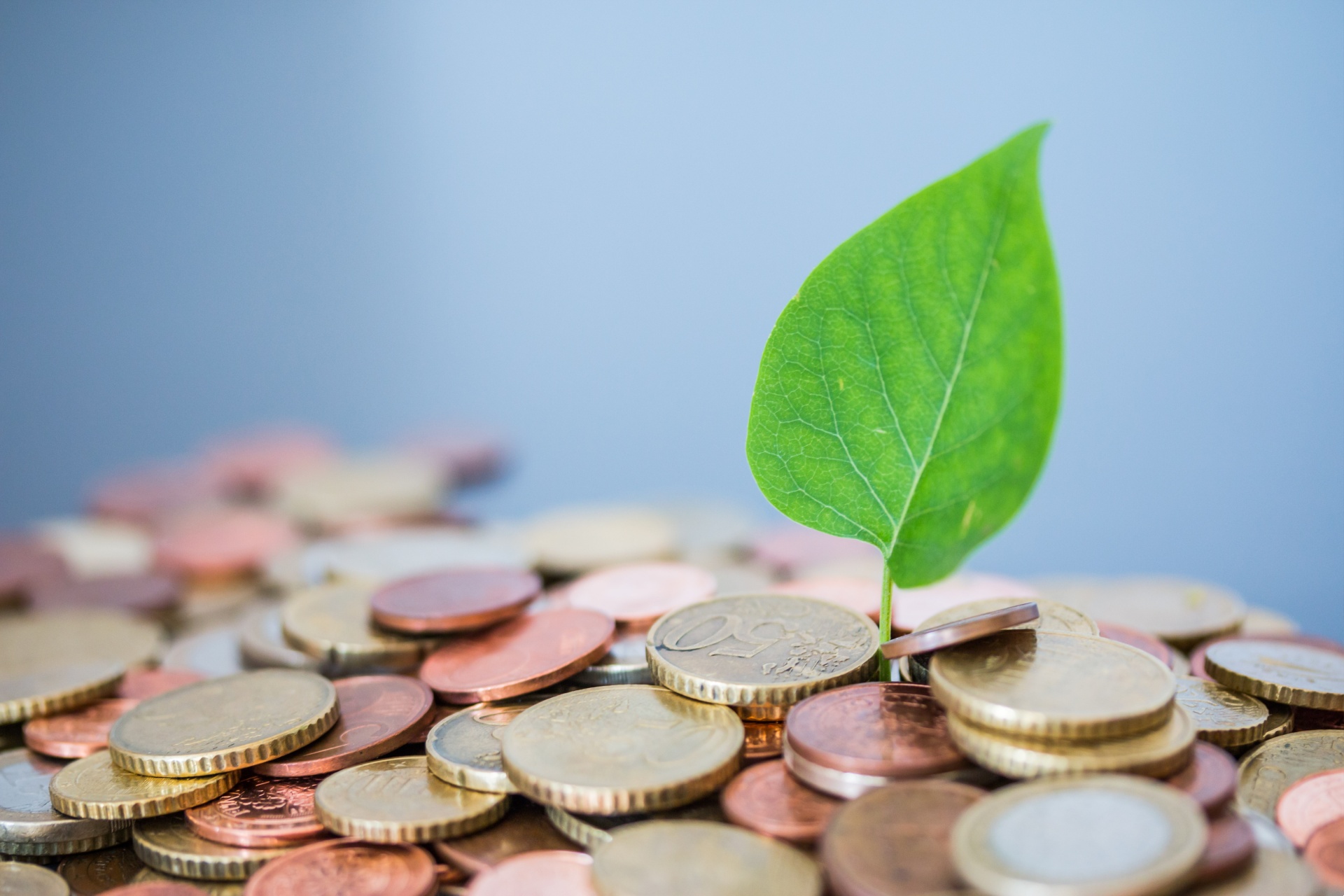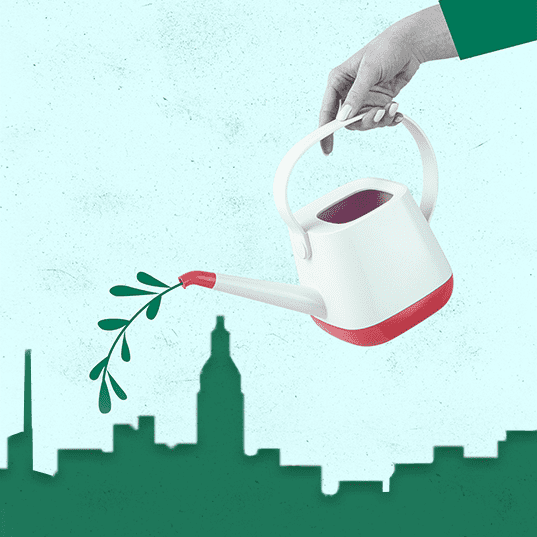Regenerative infrastructures to mitigate the effects of climate change
Cities around the world are looking for ways to build regenerative infrastructures in response to the consequences of the climate crisis
Inspired by this idea, more and more cities around the world are looking for ways to build regenerative infrastructures in response to the consequences of the climate crisis. In addition to the dangers posed directly by extreme weather events such as floods and droughts, indirect damage related to infrastructure failure is becoming more frequent due to rising temperatures, making it clear that traditional urban designs and buildings need to change to adapt to the new circumstances.
In response, regenerative infrastructures emerge: systems designed not only to meet today's needs, but also to be able to adapt to tomorrow's demands.
What will I read about in this article?
Where regeneration and infrastructure meet
Sustainable infrastructure is infrastructure that is designed and built with long-term environmental, economic and social impacts in mind. Sustainable infrastructure aims to reduce its impact on the environment, preserve natural resources and improve the quality of life of local communities.
 Regenerative infrastructures are rooted on this idea, but go beyond it. Their main objective is to restore balance to ecosystems, rather than simply minimising their impact. They focus on creating integrated solutions that see infrastructure as part of a larger natural system.
Regenerative infrastructures are rooted on this idea, but go beyond it. Their main objective is to restore balance to ecosystems, rather than simply minimising their impact. They focus on creating integrated solutions that see infrastructure as part of a larger natural system.
These infrastructures are based on the idea that construction should be able to regenerate and restore the environment rather than degrade or deplete it. This practice includes the use of green building techniques and technologies, the use of renewable energy and the conservation of natural resources, with the aim of minimising waste and pollution generated by buildings and cities. In addition, regenerative infrastructure aims to improve the health and well-being of the community by providing green and healthy spaces to live and work in.
A great example of this type of urban design can be found in Seoul, the capital of South Korea. Just two decades ago the Cheonggyecheon stream, which runs through the city centre, lay under tons of concrete. However, a project to regenerate the area brought it back to the surface and now it flows again, clean and blue, through the heart of the Asian megalopolis. Now citizens enjoy a green and welcoming corridor that invites strolling and pure recreation.
But it means more than that: the stream prevents flood risk, has increased biodiversity sixfold and combats pollution and the heat island effect - the temperature is between 3.3 and 5.9 degrees lower than in parallel streets .
Fargo-Moorhead, a river diversion to mitigate flooding
Another great example of regenerative infrastructure, in this case still under construction, is in North Dakota and is the first green finance initiative in the United States designed specifically for climate change adaptation and mitigation. We’re talking about the Fargo-Moorhead floodwater diversion to address the threat of overflows and flooding of the Red River. The project grew out of studies following the historic flooding of the river, which caused an estimated €3 billion in damages.
The project involves the construction of a 30-mile (48-kilometre) diversion channel around the Fargo metropolitan area, as well as a series of infrastructure such as dams, canals, bridges and other structures to control potential future flooding of the river. It also includes the restoration of natural and wetland areas in the area. Once completed, it will protect more than 235,000 people in the main population centres between Fargo and Moorhead.
How regenerative infrastructure helps us with floods
 The case of Dakota and the threat of river flooding is not unique. Many cities are now facing flooding caused by torrential rains or other weather events related to climate change. The main reason for this is the disconnect in their design between the city and the water.
The case of Dakota and the threat of river flooding is not unique. Many cities are now facing flooding caused by torrential rains or other weather events related to climate change. The main reason for this is the disconnect in their design between the city and the water.
In order to achieve sustainable water management, strategies such as the sponge city, an urban planning project that we’ve already discussed here, have emerged. But more and more projects, such as Fargo-Moorhead, are aimed at preventing and mitigating flooding:
- Green infrastructure: Regenerative infrastructure promotes the use of green spaces and permeable areas that allow water to infiltrate into the ground. This can reduce the amount of surface runoff and the risk of flooding.
- Sustainable drainage systems: Regenerative infrastructure can include the installation of sustainable drainage systems, such as ditches, depressions and constructed wetlands, which can filter and slow the flow of water, reducing the risk of flooding.
- River conservation and restoration: can help prevent bank erosion and keep water flow within the river channel, rather than outside it, reducing the risk of flooding.
- Use of terraces and natural barriers: regenerative infrastructure can promote the creation of terraces and natural barriers, such as living walls and plant screens, which can help reduce the velocity of rainwater and reduce flood risks.
In an ever-changing world scenario, it is essential to think of this type of infrastructure as a necessary asset to create regenerative and resilient cities.
Sources:
- https://www.sostenibilidad.com/construccion-y-urbanismo/ciudades-regenerativas/
- https://demoshelsinki.fi/2022/07/25/what-is-regenerative-infrastructure/






